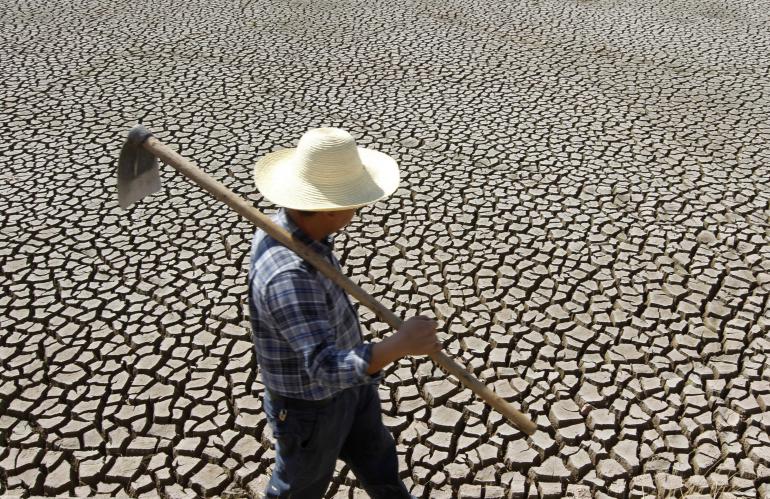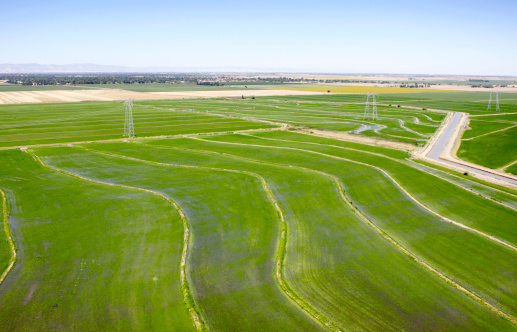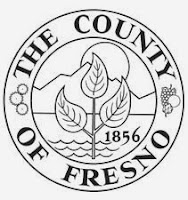A Rant on the War for Water — or perhaps just a restatement of the obvious
Commentary by Laurie Greene, Editor
The War for Water has become more complex, fractious, and dire.
The battles are marked by staggering amounts of purchased-but-undelivered water supplies; broken contract obligations;
local water districts scrambling to find any source of water at any price; water theft; water diversion; water re-diversion; fishery restoration;
rapidly escalating overdraft and land subsidence conditions; lack of river improvements; reservoirs drying and dying; an epidemic of well drilling;
aging water infrastructure; farmers resorting to water sales profits instead of crop profits; fallowed fields;
threatened species, pitting environmental conservationists against farmer environmentalists and humans versus fish;
fish trucking; climate change confusion and unpreparedness; deals for more water imports; decisions for no Delta exports; water supply runoff;
compromised and halted agricultural research; approvals, denials, exceptions. . .
We are employing politicians, lawyers, government agencies, scientists, and institutions of education to discuss and solve our water crisis. . .
and money has been thrown at farmers, food banks, and emergency services;
but we are not investing in, creating, and aggressively launching new water storage, balanced and effective environmental solutions for threatened species;
improved sewage disposal; enforced urban water conservation; modern water conveyance and infrastructure; groundwater renewal; wide-use of desalination technology.
We face curtailed critical agricultural research; unemployment; increased crime–according to some; increased health costs; declining water quality; disappearing snowpack;
school and business shutdowns; mortgage forfeiture; homelessness;
community failures; permanent loss of farm laborers; food shortages; increased stress on food banks with dwindling food supplies;
increased food insecurity and exposure to imported food safety risks; raised food and water prices; possible loss of domestic and foreign markets; threatened economies—
‘not to mention sheer human stress, panic, and grief.
Yet, we are urging, pleading, debating, meeting, emailing, tweeting, phoning, rallying, regulating, appealing, suing, petitioning, curtailing, strategizing; lobbying . . .
What academic or worldly discipline – geography, sociology, biology, chemistry, economics, politics, psychology, medicine – or realm of life – will NOT be affected?
Who does not need food, water, air, and an income?
At what point will we hit bottom, having suffered so much that we are finally forced to compromise and reach a survivable compromised existence?
At that point, will it even be possible?
Sources and Inspiration:
Friant Waterline, “Today’s River And Salmon”, http://friantwaterline.org/todays-river-and-salmon/
Merced Sun-Star, “Merced Irrigation District Seals Deal with State for More Irrigation Water”, mercedsunstar.com/2014/04/23/3615393/mid-seals-deal-with-state-for.html?sp=/99/100/&ihp=1
Western Farm Press, “Drought Chokes Research Efforts in California”, http://westernfarmpress.com/irrigation/drought-chokes-ag-research-efforts-california?page=5
Maven’s Notebook, in general, http://mavensnotebook.com
Salt, “Fields And Farm Jobs Dry Up With California’s Worsening Drought”, http://www.npr.org/blogs/thesalt/2014/04/22/303726931/fields-and-farm-jobs-dry-up-with-californias-worsening-drought
State Water Resources Control Board; ACWA eNews; ACWA; Western United Dairymen















 Today’s announcement marks the beginning of the 2014 grant cycle. In 2013, CDFA was awarded approximately $18 million and solicited competitive proposals for projects including market enhancement, agriculture education, nutrition, and research. The 64 projects funded under the 2013 SCBGP reflect the diversity of California’s specialty crops across the state, including: creating economic opportunities for specialty crop producers through market development activities that focus on local, regional, or international markets; development of effective agritourism associations to enhance rural tourism and promote specialty crops; food safety benefits and training programs; growing community food systems in underserved neighborhoods; online irrigation nitrogen management tool for cool season vegetables; and research to mitigate impacts of invasive pests.
Today’s announcement marks the beginning of the 2014 grant cycle. In 2013, CDFA was awarded approximately $18 million and solicited competitive proposals for projects including market enhancement, agriculture education, nutrition, and research. The 64 projects funded under the 2013 SCBGP reflect the diversity of California’s specialty crops across the state, including: creating economic opportunities for specialty crop producers through market development activities that focus on local, regional, or international markets; development of effective agritourism associations to enhance rural tourism and promote specialty crops; food safety benefits and training programs; growing community food systems in underserved neighborhoods; online irrigation nitrogen management tool for cool season vegetables; and research to mitigate impacts of invasive pests.












